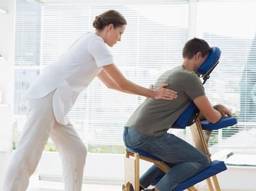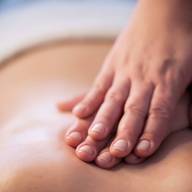Is Pregnancy Massage Safe? Everything You Need to Know for Each Trimester

Understanding Pregnancy Massage and Its Benefits
Pregnancy massage, also known as prenatal massage, is a form of bodywork designed to meet the needs of expectant mothers. It involves gentle, soothing techniques that focus on areas of tension, aiming to provide relaxation and relief from common pregnancy-related discomforts. However, it’s crucial to understand the safety guidelines and best practices, especially since a pregnant body has unique needs.
Before we get into the details of each trimester, let’s take a quick look at why pregnancy massage is so beneficial:
-
Reduces Stress and Anxiety: Hormonal changes can take a toll on your emotional well-being. A pregnancy massage can help reduce cortisol levels (the stress hormone) while boosting serotonin and dopamine levels, leaving you feeling calm and relaxed.
-
Eases Muscle and Joint Pain: As your baby grows, your body undergoes significant changes, leading to muscle tension, backaches, and joint pain. Pregnancy massage can help relieve these discomforts by improving circulation and relaxing tight muscles.
-
Improves Sleep Quality: If you’re struggling with insomnia during pregnancy, you’re not alone. By promoting relaxation and easing physical tension, pregnancy massage can help improve your sleep quality, so you wake up feeling more rested.
-
Reduces Swelling: Many women experience swelling, especially in the legs and feet, due to fluid retention during pregnancy. Massage can help stimulate the lymphatic system, encouraging the removal of excess fluids and reducing puffiness.
While the benefits of pregnancy massage are clear, it’s essential to know when it’s safe to start, what techniques are appropriate, and what to avoid. Let’s explore the safety considerations for each trimester.
Pregnancy Massage by Trimester: What You Need to Know
First Trimester: Proceed with Caution
The first trimester is a critical period when your body is adjusting to the new pregnancy. It’s a time of rapid development for your baby, and many women experience nausea, fatigue, and hormonal shifts. Because the risk of miscarriage is higher in the early stages of pregnancy, some massage therapists may be hesitant to perform a full-body massage during this time.
That being said, if you’re craving relief from tension and stress, light, gentle massage techniques focused on areas like the shoulders, neck, and feet can be safe during the first trimester. However, it’s crucial to inform your massage therapist that you are pregnant so they can adjust their techniques accordingly.
Here are some safety tips for first-trimester massage:
- Avoid deep tissue massage, especially on the lower back and abdomen.
- Steer clear of pressure points that may stimulate uterine contractions, such as those on the ankles and wrists.
- Opt for shorter sessions to prevent overstimulation.
Second Trimester: The Best Time for Pregnancy Massage
By the time you reach your second trimester, many of the discomforts of early pregnancy, like morning sickness, have usually subsided. This is often considered the "golden period" of pregnancy, where you may feel more energetic and comfortable. The good news? It’s generally considered safe to start receiving regular pregnancy massages during the second trimester.
During this stage, your growing belly can cause postural changes that lead to back pain, hip discomfort, and sciatica. A skilled massage therapist can help alleviate these aches by focusing on the lower back, hips, and legs, while still being mindful of your comfort.
Key considerations for second-trimester massage include:
- Always use a side-lying position, supported with pillows, to avoid putting pressure on your belly.
- Ask your therapist to avoid lying flat on your back for extended periods, as this can compress the vena cava (a major blood vessel), potentially reducing blood flow to your baby.
- Ensure that your massage therapist uses gentle, sweeping strokes rather than deep pressure.
Third Trimester: Focus on Comfort and Relaxation
As you enter your third trimester, your body is preparing for the arrival of your little one. This can mean added stress on your joints, increased swelling, and even more back pain as your belly grows. At this stage, pregnancy massage can be a wonderful way to reduce discomfort, promote relaxation, and even prepare your body for labor.
However, the third trimester also comes with its own set of challenges. As your due date approaches, it's crucial to be even more careful with massage techniques. Your therapist should avoid applying pressure to the lower back, as it could potentially trigger contractions. Additionally, certain acupressure points should be avoided until you’re full-term.
Here are some tips for a safe and effective third-trimester massage:
- Choose a therapist experienced in prenatal massage, as they will know how to adjust their techniques for your comfort.
- Use a side-lying or semi-reclined position to keep pressure off your belly.
- Focus on techniques that promote lymphatic drainage to reduce swelling and improve circulation.
- If you’re experiencing sciatic pain, ask your therapist to use gentle strokes on your hips and lower back.
General Safety Tips for Pregnancy Massage
Now that you understand the guidelines for each trimester, let’s go over some general safety tips to ensure a safe and enjoyable pregnancy massage experience:
-
Consult Your Doctor First: Before starting any new therapy during pregnancy, it’s always a good idea to consult your healthcare provider. They can provide guidance based on your specific health conditions and pregnancy status.
-
Choose a Qualified Therapist: Not all massage therapists are trained in pregnancy massage, so make sure to choose someone who is certified in prenatal massage. They’ll know the best techniques to use and what to avoid.
-
Listen to Your Body: If at any point during the massage you feel uncomfortable, dizzy, or experience pain, let your therapist know immediately. Your comfort and safety are the top priority.
-
Avoid Certain Essential Oils: While aromatherapy can enhance relaxation, some essential oils are not safe during pregnancy. Avoid oils like rosemary, clary sage, and juniper, which can stimulate uterine contractions. Opt for milder scents like lavender or chamomile if approved by your doctor.
-
Stay Hydrated: After a massage, it’s important to drink plenty of water. Massage can release toxins into your bloodstream, and staying hydrated helps flush them out of your system.
Embracing the Benefits of Pregnancy Massage
Pregnancy is a time of immense change, both physically and emotionally. Incorporating pregnancy massage into your routine can be a beautiful way to care for yourself, find relief from aches and pains, and prepare your body for labor.
Whether you’re seeking relief from back pain, looking to reduce swelling in your feet, or simply craving some well-deserved relaxation, pregnancy massage can be a wonderful addition to your self-care routine. Just remember to listen to your body, choose a qualified therapist, and prioritize your comfort.
So go ahead, book that massage, relax, and let yourself be pampered. You deserve it.

